CD, CD Çalar, DVD, DVD Çalar, SACD, LP, Plak Çeşitleri ve Fiyatları
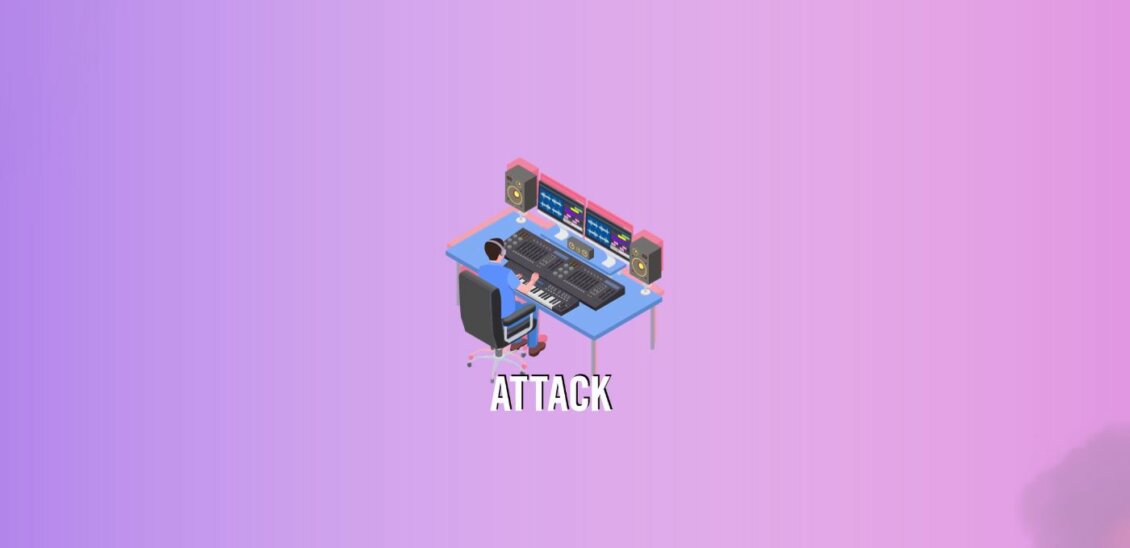
From synths to effects, grooveboxes to pedals, here are our favorite music production releases of 2023.
It’s safe to say that 2023 was a banner year for music production gear and software. Whether you were tightening your purse strings and sticking to budget gear or seriously abusing your credit limit on top-shelf releases, there were tons of drool-worthy releases to test your mettle this year.
We continue to be blessed with incredible hardware synthesizers. The analog revival shows no signs of stopping, with plenty of affordable as well as top-of-the-line instruments dropping one after another. Digital has plenty of representation too, with hybrid instruments – those combining digital oscillators with analog filters – making serious waves. Hardware effects such as pedals are also a force to be reckoned with, with plenty of enticing new boxes causing us to GAS up.
In terms of software, there was an almost bewildering amount of new releases, from synthesizers to effects and everything in between. There really never has been a better time to be into music production.
With so many excellent releases, it can be hard to pick the ten best. When we sat down and looked at all of the products that crossed our desks in these 12 months, however, there were a few that really stood out. These then are our picks for the best hardware and software releases of 2023 organized in order of ascending price.
[advert]
Baby Audio Transit
With their fun effects and great recent synth, BA-1, Baby Audio is fast becoming one of our favorite developers. Their latest release is Transit, a plugin no one knew they needed but is now an absolute must-have.
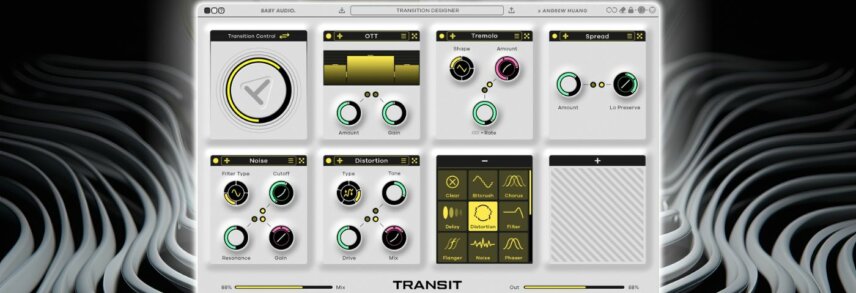
Developed in partnership with YouTube superstar Andrew Huang, Transit is a (you guessed it) transition designer. Good transitions are incredibly important in loop-based music, as they keep the listener engaged. Sure, you can use multiple tracks and lanes of automation to create your own transitions but if you’re like us you probably just reuse the same white noise samples over and over. Transit makes crafting transitions easy, with tons of effects pulled from the Baby Audio back catalog plus a single giant macro knob to automate it all. Genius.
Once you use Transit, you’ll wonder how you ever got along without it. And at around $99, Transit is a steal.
Find out more.
[advert]
Sonic Charge Synplant 2
Hands up, who’s tired of hearing about AI? If 2023 will be remembered for anything, it will be the year that AI exploded into general consciousness. This has meant a lot of start-ups promising exciting new things with AI but not much in the way of actual useful products. Of course, AI has been quietly assisting in music production for a while now and one of the best of recent years is Sonic Charge’s Synplant 2.
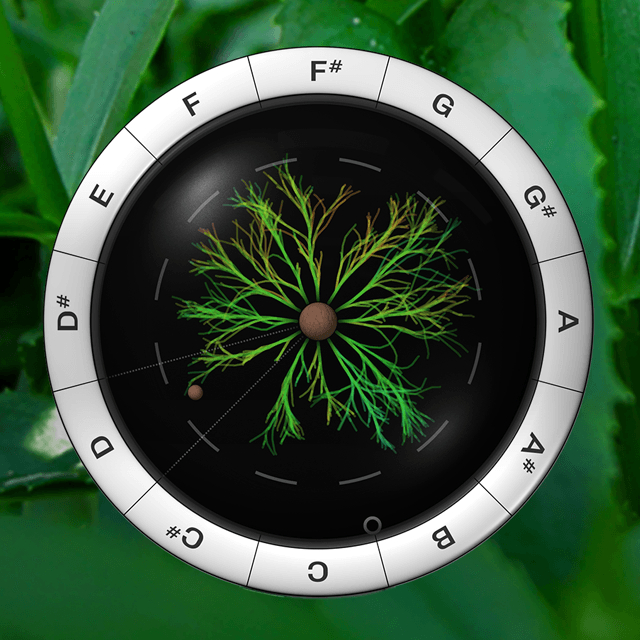
Synplant 2 evolves on the now 15-year-old original’s basic idea: growing synth patches like they were plants. Version two goes even deeper with the Genopatch function, which uses AI to analyze audio samples and develop virtual analog patches inspired by them. You can then delve into the patch’s “DNA” and adjust parameters before growing it from a seed into a playable plant.
If this all sounds pretty weird, it is – and that’s what makes it so enticing. It places experimentation over precision and does so in a fun and crucially musical way. It’s not a budget synth (it goes for around $149) but for those looking for some out-of-the-pot inspiration, look no further.
Find out more.
[advert]
Minimal Audio Current
Another developer that’s been killing it lately is Minimal Audio. With a slew of solid effects plugins and a dedicated user base, the time was right to finally drop an instrument. This year saw the debut of Current, a synthesizer that we called a “gorgeous-sounding wavetable beast” in our review.
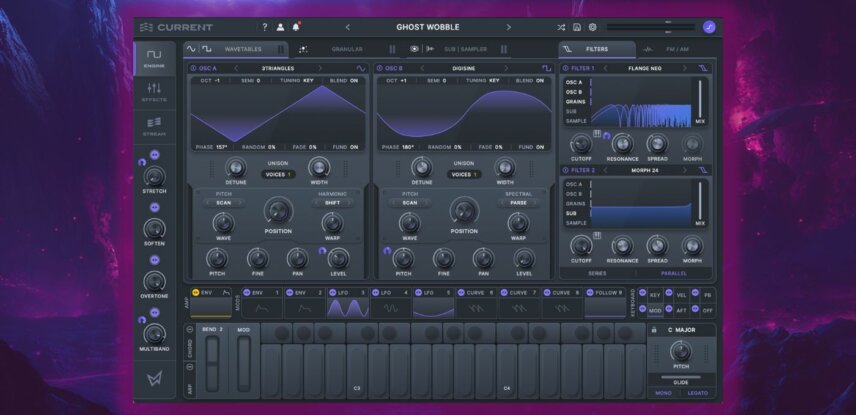
With its plethora of oscillators, including wavetable, granular, sampler, and an additive synthesis sub, there’s no end to the ways that you can build up sounds. Add to this dual filters, frequency modulation and an effects section that could only come from Minimal, and you’ve got a great-sounding and very capable synthesizer to play with.
Minimal Audio, unfortunately, dropped the ball with the plugin roll-out, insisting on a subscription-only pricing scheme before back-pedaling and offering a perpetual license. While $199 is on the pricey side it’s still a solid synth and one that we’ll be returning to again and again.
Find out more.
[advert]
Arturia Acid V
Here’s one we weren’t expecting. Who’d have thought that Arturia would do a TB-303 emulation? I guess there are only so many classic synthesizers to tackle so they were bound to get around to it eventually, but damn if Acid V hasn’t jumped to the top of our list of 303 recreations.
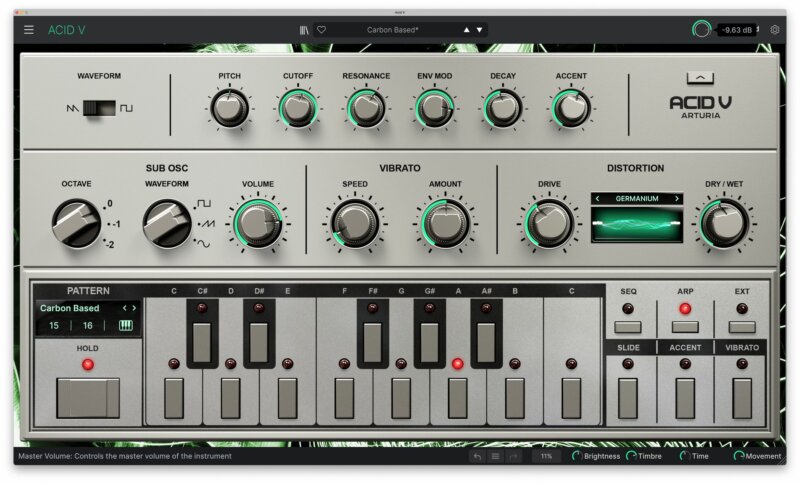
As with their other emulations, Acid V offers both traditional and modern modes of operation, with plenty of extras to take your squelch to new territories. There’s distortion, of course, but we particularly like the inclusion of a multiband compressor, letting you push, pull and squash the acid into all sorts of new shapes and squiggles.
Even if you already have a few other 303 copies in your arsenal, Acid V offers enough variation to make it worth your time. You can get it alone for $199 or as part of the new V Collection X.
Find out more.
[advert]
iZotope Ozone 11
iZotope’s mastering package Ozone is now up to version 11. Somehow the suite manages to stay not only relevant but essential – no mean feet in this day and age of home mastering, with even DAWs now providing stock mastering plugins.
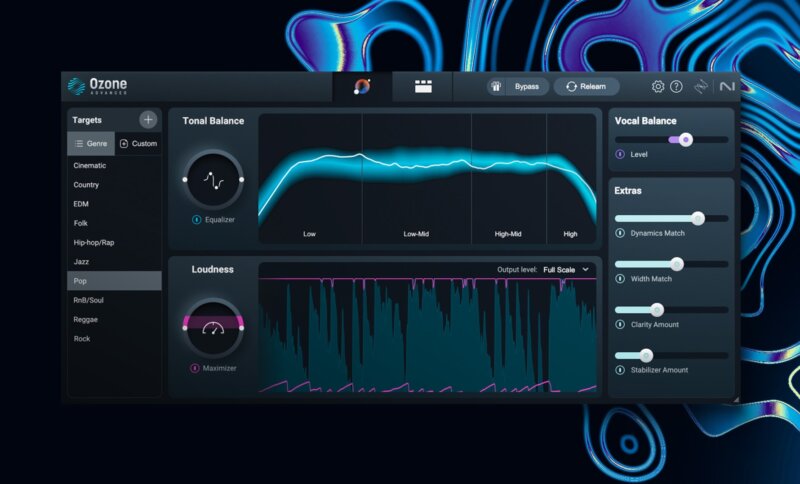
Why pony up to upgrade to Ozone 11? The big new selling points are Clarity, which uses spectral processing to make things brighter and, well, clearer; the Transient/Sustain module, which separates the audio signal into onset and tail sections for independent processing; and most impressively, there’s Stem Focus, which lets you tweak just the vocal, bass or drum stem portion of a stereo mix.
To get all of the new goodies, you’ll need to get the Advanced version for $399 (Transient/Sustain is available as part of Standard for $199).
Find out more.
[advert]
Behringer Pro-800
Among the many synths that Behringer has released over the last five or so years, a few really stand out. The Model D is one, as is the Pro-1. Another Sequential-inspired instrument is this year’s desktop format Pro-800. A new take on the classic Prophet-600, it ups the analog voice count from six to eight and manages to come in under $400. That’s a ridiculous price for eight voices of polyphony.
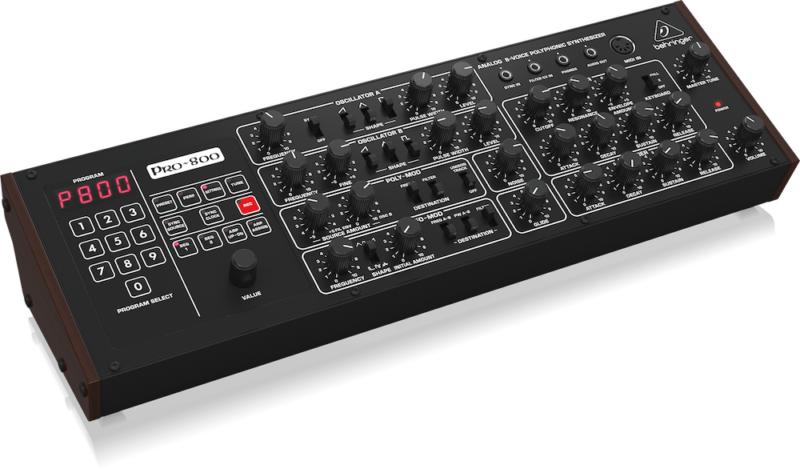
Along with the extra two voices, Behringer have gone with improved envelopes for the Pro-800. The original may have had a great tone but its digital envelopes were on the sluggish side. The Gligli mod fixed that, tightening them up nicely. After a firmware update, the Pro-800 now has these snappy envelopes instead of the originals (although you probably could go back to the first revision if you prize authenticity).
Find out more.
[advert]
Hologram Electronics Chroma Console
The evolution of the guitar pedal is something to behold. Although they’re still ostensibly meant to go under your feet, modern pedals are so big, chunky and complex, you’re better off sitting them on a table and operating them with your hands. Chroma Console from Hologram Electronics is the latest in this new style, combining a number of different effects inspired by vintage recording technology into a single unit.
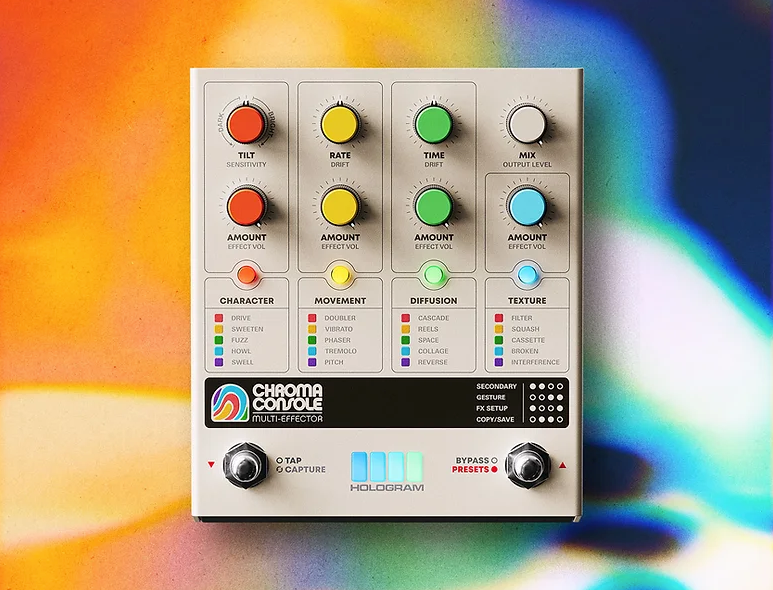
Like a multieffects plugin in a box, it offers 20 types like drive, phaser, vibrato, and cassette emulation, all organized into four swappable modules. With just a handful of knobs and two switches, it’s as easy to use as it is beautiful sounding. And, with a nod to synth players, it offers line as well as instrument inputs.
At $399 it’s no impulse purchase, although once you hear it you’ll absolutely have to have it.
Find out more.
[advert]
Polyend Play+
Polyend released the Play, a sample-based groovebox, in 2022. Now powered by an updated processor, Polyend introduced the Play+ at the end of this year, significantly upping the ante. It sounds amazing and is bags of fun to play with.
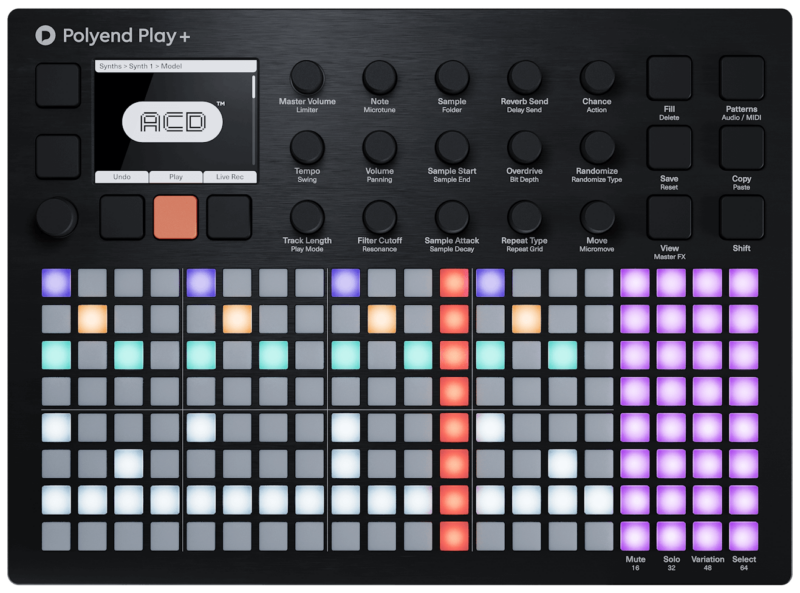
The big selling point is the synth engine. You actually get four, which run the gamut from a mono analog-style bass synth, through a VA poly and even a two-operator FM synth. One complaint about the original was the mono samples. Polyend have now included a stereo sample playback engine. They’ve also thrown in multitrack USB audio, meaning you can send each of the internal tracks to your DAW for further production. Nice.
The original Play is still on sale now at a discounted price if you don’t need the fancy new options. If you do, expect to pay around $799. You can also get an upgrade kit for the regular Play if you already own one.
Find out more.
[advert]
Pittsburgh Modular Taiga
Analog is the synthesis that just keeps on giving. Just when you think it can’t go any further, in comes an instrument like Taiga to shake things up. Made by the boutique outfit Pittsburg Modular, Taiga is a semi-modular monosynth that combines elements of East and West Coast synthesis, resulting in a beautiful-sounding machine that is both familiar and experimental.
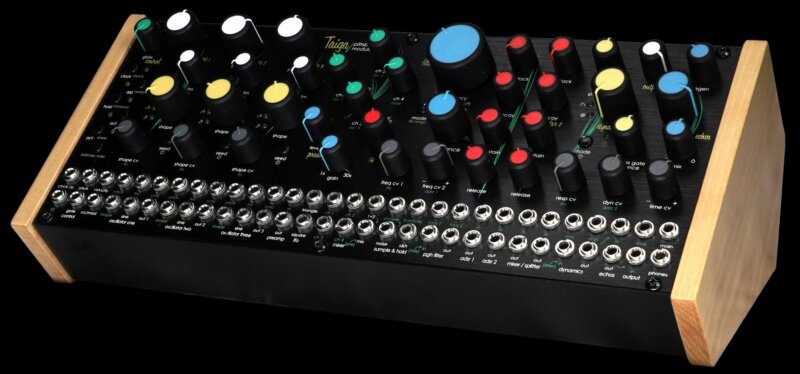
The unique sound starts with the three oscillators, which add waveshaping and wavefolding to up complexity. There’s the Pittsburgh filter, which is smooth and chewy, and then the dynamics controller, which can be run in either traditional VCA mode or as a Buchla-style low-pass gate to attenuate both amplitude and harmonics. Throw in a BBD delay and take the extensive patch bay to town, and you’re in analog heaven.
The best news? Taiga sells for a very reasonable $799.
Find out more.
[advert]
Groove Synthesis 3rd Wave
The 3rd Wave came out of nowhere and surprised everyone with its phenomenal sound. Referencing the PPG Wave but not a straight clone, it offers wavetable and virtual analog oscillators, analog and digital filters, four LFOs, six envelopes, a sequencer and 24 voices of polyphony. The drawback? It’s very expensive.
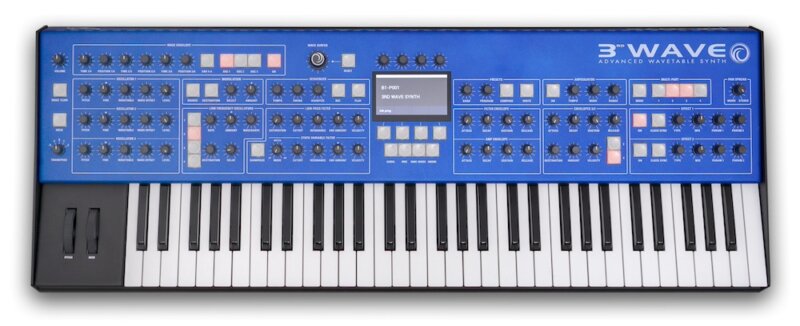
At around $5000, the 3rd Wave is out of the reach of most players. Even the desktop version is $3500. However, as you can see from the parameter list above, it can do a lot. It also sounds incredible. From the alias-studded original wavetable mode to the modern smooth one, it just oozes sonic class. And with the new MPE update, it’s also extremely expressive.
There have been quite a few high-profile top-shelf synth releases recently. The 3rd Wave may be the best of the bunch.
Find out more.
[product-collection]
[social-links heading=”Follow Attack Magazine” facebook=”https://www.facebook.com/attackmag” twitter=”https://twitter.com/attackmag1″ instagram=”https://www.instagram.com/attackmag/” youtube=”https://www.youtube.com/user/attackmag” soundcloud=”https://soundcloud.com/attackmag” tiktok=”https://www.tiktok.com/@attackmagazine”]
attackmagazine

From synths to effects, grooveboxes to pedals, here are our favorite music production releases of 2023.
It’s safe to say that 2023 was a banner year for music production gear and software. Whether you were tightening your purse strings and sticking to budget gear or seriously abusing your credit limit on top-shelf releases, there were tons of drool-worthy releases to test your mettle this year.
We continue to be blessed with incredible hardware synthesizers. The analog revival shows no signs of stopping, with plenty of affordable as well as top-of-the-line instruments dropping one after another. Digital has plenty of representation too, with hybrid instruments – those combining digital oscillators with analog filters – making serious waves. Hardware effects such as pedals are also a force to be reckoned with, with plenty of enticing new boxes causing us to GAS up.
In terms of software, there was an almost bewildering amount of new releases, from synthesizers to effects and everything in between. There really never has been a better time to be into music production.
With so many excellent releases, it can be hard to pick the ten best. When we sat down and looked at all of the products that crossed our desks in these 12 months, however, there were a few that really stood out. These then are our picks for the best hardware and software releases of 2023 organized in order of ascending price.
[advert]
Baby Audio Transit
With their fun effects and great recent synth, BA-1, Baby Audio is fast becoming one of our favorite developers. Their latest release is Transit, a plugin no one knew they needed but is now an absolute must-have.

Developed in partnership with YouTube superstar Andrew Huang, Transit is a (you guessed it) transition designer. Good transitions are incredibly important in loop-based music, as they keep the listener engaged. Sure, you can use multiple tracks and lanes of automation to create your own transitions but if you’re like us you probably just reuse the same white noise samples over and over. Transit makes crafting transitions easy, with tons of effects pulled from the Baby Audio back catalog plus a single giant macro knob to automate it all. Genius.
Once you use Transit, you’ll wonder how you ever got along without it. And at around $99, Transit is a steal.
[advert]
Sonic Charge Synplant 2
Hands up, who’s tired of hearing about AI? If 2023 will be remembered for anything, it will be the year that AI exploded into general consciousness. This has meant a lot of start-ups promising exciting new things with AI but not much in the way of actual useful products. Of course, AI has been quietly assisting in music production for a while now and one of the best of recent years is Sonic Charge’s Synplant 2.

Synplant 2 evolves on the now 15-year-old original’s basic idea: growing synth patches like they were plants. Version two goes even deeper with the Genopatch function, which uses AI to analyze audio samples and develop virtual analog patches inspired by them. You can then delve into the patch’s “DNA” and adjust parameters before growing it from a seed into a playable plant.
If this all sounds pretty weird, it is – and that’s what makes it so enticing. It places experimentation over precision and does so in a fun and crucially musical way. It’s not a budget synth (it goes for around $149) but for those looking for some out-of-the-pot inspiration, look no further.
[advert]
Minimal Audio Current
Another developer that’s been killing it lately is Minimal Audio. With a slew of solid effects plugins and a dedicated user base, the time was right to finally drop an instrument. This year saw the debut of Current, a synthesizer that we called a “gorgeous-sounding wavetable beast” in our review.

With its plethora of oscillators, including wavetable, granular, sampler, and an additive synthesis sub, there’s no end to the ways that you can build up sounds. Add to this dual filters, frequency modulation and an effects section that could only come from Minimal, and you’ve got a great-sounding and very capable synthesizer to play with.
Minimal Audio, unfortunately, dropped the ball with the plugin roll-out, insisting on a subscription-only pricing scheme before back-pedaling and offering a perpetual license. While $199 is on the pricey side it’s still a solid synth and one that we’ll be returning to again and again.
[advert]
Arturia Acid V
Here’s one we weren’t expecting. Who’d have thought that Arturia would do a TB-303 emulation? I guess there are only so many classic synthesizers to tackle so they were bound to get around to it eventually, but damn if Acid V hasn’t jumped to the top of our list of 303 recreations.

As with their other emulations, Acid V offers both traditional and modern modes of operation, with plenty of extras to take your squelch to new territories. There’s distortion, of course, but we particularly like the inclusion of a multiband compressor, letting you push, pull and squash the acid into all sorts of new shapes and squiggles.
Even if you already have a few other 303 copies in your arsenal, Acid V offers enough variation to make it worth your time. You can get it alone for $199 or as part of the new V Collection X.
[advert]
iZotope Ozone 11
iZotope’s mastering package Ozone is now up to version 11. Somehow the suite manages to stay not only relevant but essential – no mean feet in this day and age of home mastering, with even DAWs now providing stock mastering plugins.

Why pony up to upgrade to Ozone 11? The big new selling points are Clarity, which uses spectral processing to make things brighter and, well, clearer; the Transient/Sustain module, which separates the audio signal into onset and tail sections for independent processing; and most impressively, there’s Stem Focus, which lets you tweak just the vocal, bass or drum stem portion of a stereo mix.
To get all of the new goodies, you’ll need to get the Advanced version for $399 (Transient/Sustain is available as part of Standard for $199).
[advert]
Behringer Pro-800
Among the many synths that Behringer has released over the last five or so years, a few really stand out. The Model D is one, as is the Pro-1. Another Sequential-inspired instrument is this year’s desktop format Pro-800. A new take on the classic Prophet-600, it ups the analog voice count from six to eight and manages to come in under $400. That’s a ridiculous price for eight voices of polyphony.

Along with the extra two voices, Behringer have gone with improved envelopes for the Pro-800. The original may have had a great tone but its digital envelopes were on the sluggish side. The Gligli mod fixed that, tightening them up nicely. After a firmware update, the Pro-800 now has these snappy envelopes instead of the originals (although you probably could go back to the first revision if you prize authenticity).
[advert]
Hologram Electronics Chroma Console
The evolution of the guitar pedal is something to behold. Although they’re still ostensibly meant to go under your feet, modern pedals are so big, chunky and complex, you’re better off sitting them on a table and operating them with your hands. Chroma Console from Hologram Electronics is the latest in this new style, combining a number of different effects inspired by vintage recording technology into a single unit.

Like a multieffects plugin in a box, it offers 20 types like drive, phaser, vibrato, and cassette emulation, all organized into four swappable modules. With just a handful of knobs and two switches, it’s as easy to use as it is beautiful sounding. And, with a nod to synth players, it offers line as well as instrument inputs.
At $399 it’s no impulse purchase, although once you hear it you’ll absolutely have to have it.
[advert]
Polyend Play+
Polyend released the Play, a sample-based groovebox, in 2022. Now powered by an updated processor, Polyend introduced the Play+ at the end of this year, significantly upping the ante. It sounds amazing and is bags of fun to play with.

The big selling point is the synth engine. You actually get four, which run the gamut from a mono analog-style bass synth, through a VA poly and even a two-operator FM synth. One complaint about the original was the mono samples. Polyend have now included a stereo sample playback engine. They’ve also thrown in multitrack USB audio, meaning you can send each of the internal tracks to your DAW for further production. Nice.
The original Play is still on sale now at a discounted price if you don’t need the fancy new options. If you do, expect to pay around $799. You can also get an upgrade kit for the regular Play if you already own one.
[advert]
Pittsburgh Modular Taiga
Analog is the synthesis that just keeps on giving. Just when you think it can’t go any further, in comes an instrument like Taiga to shake things up. Made by the boutique outfit Pittsburg Modular, Taiga is a semi-modular monosynth that combines elements of East and West Coast synthesis, resulting in a beautiful-sounding machine that is both familiar and experimental.

The unique sound starts with the three oscillators, which add waveshaping and wavefolding to up complexity. There’s the Pittsburgh filter, which is smooth and chewy, and then the dynamics controller, which can be run in either traditional VCA mode or as a Buchla-style low-pass gate to attenuate both amplitude and harmonics. Throw in a BBD delay and take the extensive patch bay to town, and you’re in analog heaven.
The best news? Taiga sells for a very reasonable $799.
[advert]
Groove Synthesis 3rd Wave
The 3rd Wave came out of nowhere and surprised everyone with its phenomenal sound. Referencing the PPG Wave but not a straight clone, it offers wavetable and virtual analog oscillators, analog and digital filters, four LFOs, six envelopes, a sequencer and 24 voices of polyphony. The drawback? It’s very expensive.

At around $5000, the 3rd Wave is out of the reach of most players. Even the desktop version is $3500. However, as you can see from the parameter list above, it can do a lot. It also sounds incredible. From the alias-studded original wavetable mode to the modern smooth one, it just oozes sonic class. And with the new MPE update, it’s also extremely expressive.
There have been quite a few high-profile top-shelf synth releases recently. The 3rd Wave may be the best of the bunch.
[product-collection]
[social-links heading=”Follow Attack Magazine” facebook=”https://www.facebook.com/attackmag” twitter=”https://twitter.com/attackmag1″ instagram=”https://www.instagram.com/attackmag/” youtube=”https://www.youtube.com/user/attackmag” soundcloud=”https://soundcloud.com/attackmag” tiktok=”https://www.tiktok.com/@attackmagazine”]